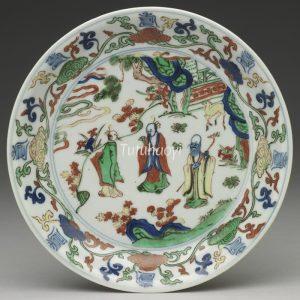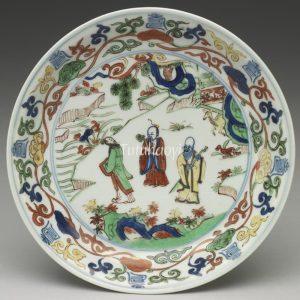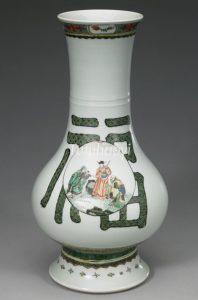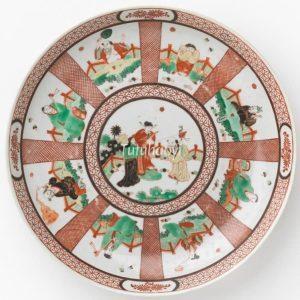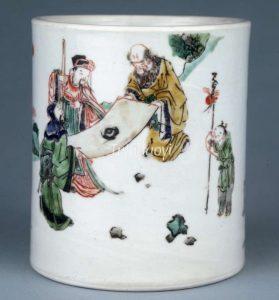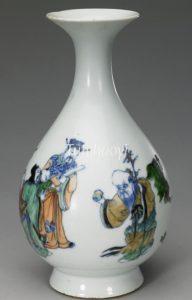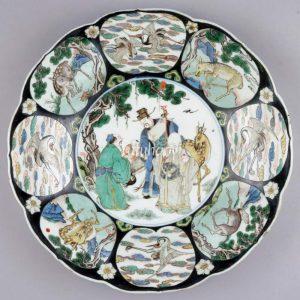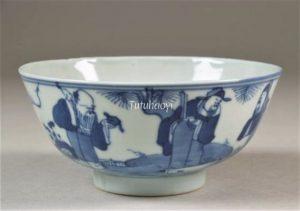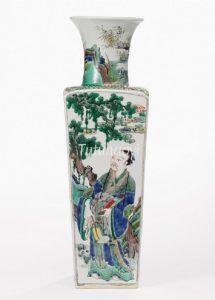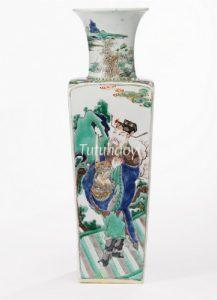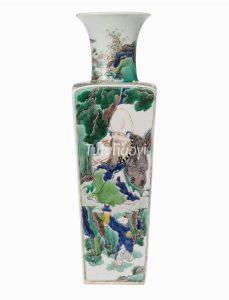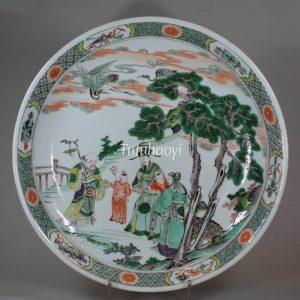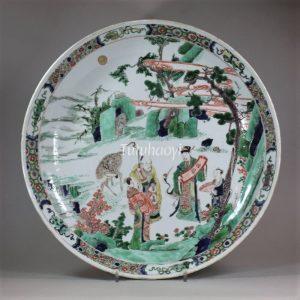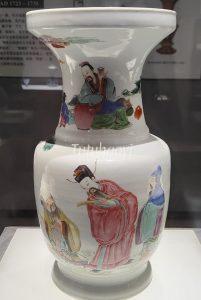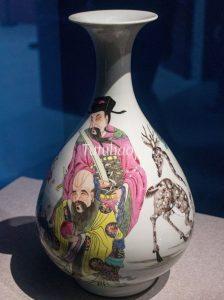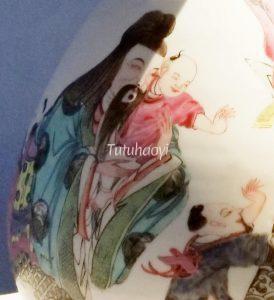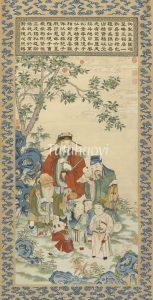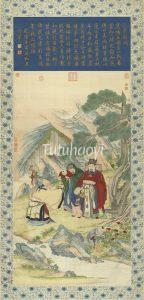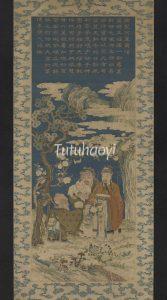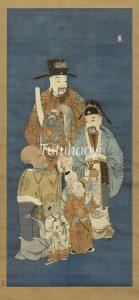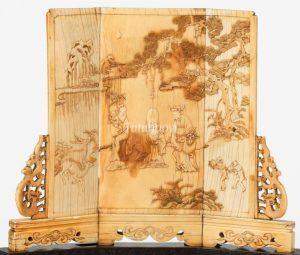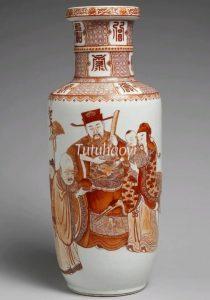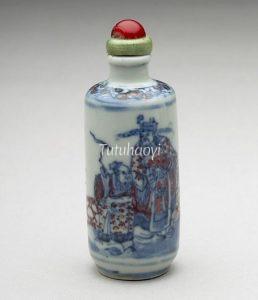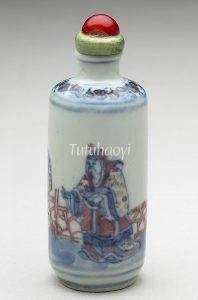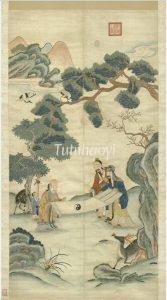Three Star Gods
福禄寿三星
© Tutuhaoyi.com owns the copyright of the description content for the images attached. Quoting all or part of the description content on this page is permitted ONLY IF ‘Tutuhaoyi.com’ is clearly acknowledged anywhere your quote is produced unless stated otherwise. (本页描述内容版权归Tutuhaoyi.com所有,转发或引用需注明 “Tutuhaoyi.com”, 侵权必究, 已注开源信息的条目除外。)
The figures of Three Star Gods are personified representation of Good Fortune, Prosperity, and Longevity. They originated from Chinese people’s worship of the stars in the southern sky. During the time of Lichun 立春 (the Beginning of Spring), there are three stars that are close in distance and form a straight line. These three stars are commonly named as ‘福’ (Fú), ‘禄’ (Lù), and ‘寿’ (Shòu). They are personified as auspicious star immortals who respectively govern one’s blessings, official career, and lifespan.
‘福’ fu primarily represents five types of blessings (五福 wu fu). According to the Book of Documents (书经 Shujing) in the Zhou Dynasty (c. 1046–256 BCE), the Five Blessings are ‘longevity 寿 shou’, ‘wealth 富 fu’, ‘wellbeing and peace 康宁 kang ning’, ‘love of virtue 攸好德 you hao de’, and ‘natural death 考终命 kao zhong ming’. The Fu Star Fuxing 福星 is represented in human form of a star deity holding objects like a ruyi (如意, a symbol of good fortune) or a yuanbao (元宝, an ancient Chinese currency).
The ‘禄’ Lu Star Luxing 禄星 is in charge of literary success and official salary. In ancient China, scholars took imperial examinations to become officials. Once a scholar passed exams, he could hold an official position and receive a salary. Therefore, attaining a high-ranking official position with a substantial income became the aspiration of many scholars. The Lu Star was revered for his governing of success, fame, official position, and emolument, as well as his blessing of having many descendants. He is often signified by holding a child.
The ‘寿’ Shou Star is also known as the Old Man of the South Pole (南极仙翁), or Shoulao (寿老, elderly man of longevity). His features are white whiskers as well as a high and protruding forehead. He usually holds a long cane in one hand, and sometimes a peach in the other. He is often accompanied by a deer and/or a crane, both being symbols of longevity. There may also be lingzhi (灵芝, fungi or mushrooms) and longevity rocks in the surrounding, emphasising the good wish of a long life.
In traditional Chinese decorative art, there are various methods to portray the theme of Good Fortune, Prosperity, and Longevity. Apart from depicting the three deity figures directly, using a combination of other motifs to infer the three stars is a clever way to express the auspicious wishes. Homophonic images such as bats (蝠 fu) and deer (鹿 lu) are applied to pun on Fu and Lu Stars, and cranes, peaches, lingzhi, pine trees, or longevity rocks are used to symbolise ‘longevity’.
Fig 1 & 2: a pair of porcelain dishes with overglaze enamelled decoration, Wanli period (1573–1620), Ming dynasty, courtesy of the National Palace Museum, Taipei
Fig 3: famille verte porcelain vase, Kangxi period (1662–1722), Qing dynasty, courtesy of the Palace Museum, Beijing
Fig 4: porcelain plate with overglaze enamelled decoration, Kangxi period (1662–1722), Qing dynasty, courtesy of the National Gallery of Victoria, Melbourne, Accession Number2374-D3. Photo: National Gallery of Victoria, Melbourne
Fig 5: famille verte brush pot, Kangxi period (1662–1722), Qing dynasty, courtesy of SOAS, photo from the Trustees of the British Museum
Fig 6: porcelain vase with underglaze blue and overglaze enamelled decoration, Kangxi period (1662–1722), Qing dynasty, courtesy of the Palace Museum, Beijing
Fig 7: porcelain dish with scalloped lip, Kangxi period (1662–1722), Qing dynasty, courtesy of the SOAS, photo from the British Museum, London
Fig 8: porcelain bowl with underglaze blue decoration, Kangxi period (1662–1722), Qing dynasty, courtesy of Princessehof Ceramics Museum, Leeuwarden, The Netherlands
Fig 9-11: famille verte square-section vase, Kangxi period (1662–1722), Qing dynasty, courtesy of the Jie Rui Tang Collection
Fig 12 & 13: famille verte dishes, Kangxi period (1662–1722), Qing dynasty, courtesy of Guest & Gray Antique Dealer, London
Fig 14: famille rose porcelain vase, Yongzheng period (1723–35), Qing dynasty, courtesy of China Ceramic Museum, Jingdezhen, Jiangxi Province, China. Photograph by Rachel Ma
Fig 15-16: famille rose yuhuchun vase, Yongzheng period (1723–35), Qing dynasty, courtesy of the Palace Museum, Beijing
Fig 17: Ode to the Three Star Gods, hanging scroll, kesi silk tapestry, Qianlong period (1736–95), Qing dynasty, courtesy of the National Palace Museum, Taipei
Fig 18: Ode to the Three Star Gods, hanging scroll, kesi silk tapestry, Qianlong period (1736–95), Qing dynasty, courtesy of the National Palace Museum, Taipei
Fig 19: Ode to the Three Star Gods, hanging scroll, kesi silk tapestry, Qianlong period (1736–95), Qing dynasty, courtesy of the National Palace Museum, Taipei
Fig 20: The Three Star Gods, hanging scroll, silk embroidery, Qianlong period (1736–95), Qing dynasty, courtesy of the National Palace Museum, Taipei
Fig 21: ivory desk screen,18th century, courtesy of National Gallery of Victoria, Melbourne, Felton Bequest, 1927. Photo: National Gallery of Victoria, Melbourne
Fig 22: ivory snuff-bottle, 18th –19th century (early), courtesy of the British Museum, London
Fig 23: porcelain vase with overglaze iron red enamelled decoration, 19th century, courtesy of Musee Guimet, Paris
Fig 24-25: porcelain snuff bottle with underglaze blue and red decoration, Qing dynasty (1644–1911), courtesy of the National Palace Museum, Taipei
Fig 26: The Three Star Gods, silk embroidery, Qing dynasty (1644–1911), courtesy of the National Palace Museum, Taipei
